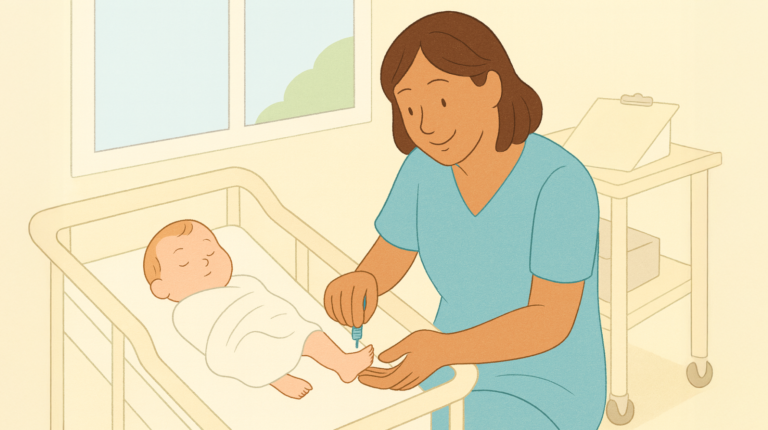It’s a powerful thing to be a parent. A (very cute) little human depends on you for everything—they need you for every need they have. That’s pretty awesome, but let’s be honest, it’s also pretty exhausting.
So if you’re starting to wonder when your baby will be able to self-soothe just a little, you are not alone.
There’s a lot of controversy out there about when and how to help your baby self-soothe. Let’s take a look at some of the biggest self-soothing questions, so you can start to guide your baby through it while continuing to be the loving rock of support they need.
What is self-soothing?
Self-soothing is when we use techniques (consciously or subconsciously) to make ourselves feel calmer, happier, or just more regulated. Humans of all ages self-soothe.
When you get stressed, you may find yourself taking deep breaths or seeking out a favorite food — these are all methods of self-soothing!
Our job as parents is to guide our babies as they learn to self-soothe so that they feel supported and safe. The trick here is to encourage healthy, sustainable self-soothing techniques while avoiding the ones that we don’t want to become habits.
Is self-soothing good for babies?
Eventually, learning to self-soothe is a good skill for babies… and children of all ages. Learning to put themselves back to sleep in the middle of the night or get through a tough transition in toddlerhood is great (for them and you).
It will empower them to recognize their need for calm and use trusted, positive coping skills to make themselves feel better.
But that’s a pretty complex idea for a baby to understand. Self-soothing is learned over time through gentle, loving guidance from parents. If we try to rush it or if the process of self-soothing becomes stressful for the baby, it may take longer and actually cause the opposite response.
When can babies self-soothe?
Experts think that babies can start to self-soothe somewhere between 3 and 6 months — at younger ages, their brains simply can’t self-soothe.
Around 3 to 6 months, you may notice your baby starting self-soothing techniques, like sucking on their hand when they get upset, or maybe even falling back to sleep on their own after rustling a bit in their crib. This is when you can start to reinforce healthy, self-soothing techniques.
What are some self-soothing techniques?
Every baby is different, but there are some gentle methods that are a great place to start.
- Make sure their needs are met. This sounds obvious, but in the haze of new parenthood, it can be easy to forget. A baby that is hungry, too hot, or has a wet diaper will not be able to self-soothe, so make sure they are set up for success.
- Check in with yourself too. You are your baby’s calm. So if you’re feeling stressed by your screaming baby (totally normal and understandable, of course) take a second to soothe yourself first.
Take some deep breaths, have a glass of water, and get yourself regulated so that you can better help your baby.
- Routine, routine, routine. Babies learn through repetition, and routines are a great way to help. Develop a nap and bedtime routine, and stick with it, to the best of your ability (and make sure anyone else that is involved in taking care of the baby knows it, too).
Try this: When bedtime is approaching, turn down the lights and turn off the TV. Start talking in hushed tones. Give baby a warm bath, read a book or two, and then it’s bedtime. It doesn’t have to be a long routine… in fact, it’s better if it isn’t.
Just create some basic habits that show your baby that it’s time to start getting sleepy.
- Adjust their sleep environment. Think about ways that you can make their sleep environment as sleep-inducing as possible: black-out curtains, white or pink noise, and a comfortable temperature all help set the stage for sleep.
- Respond to their cries in the way that feels best to you. As your baby gets older, you may decide to start teaching your baby to self-soothe.
The American Academy of Pediatrics recommends the graduated extinction method, which involves slowly increasing the amount of time it takes you to respond to their cries. This gives them a chance to settle down on their own before you go in.
You may also choose to change the ways you respond; for example, instead of immediately picking them up, you might rub their back or sing a song. This way they start to self-soothe in your protective presence.
When should you visit your doctor?
Talk to your pediatrician early and often. Sleep struggles are super common, but every once in a while they do indicate that something is up: acid reflux, an infection, or even something more serious. Before starting any self-soothing teaching, check in with your pediatrician to make sure your baby is healthy and ready.




